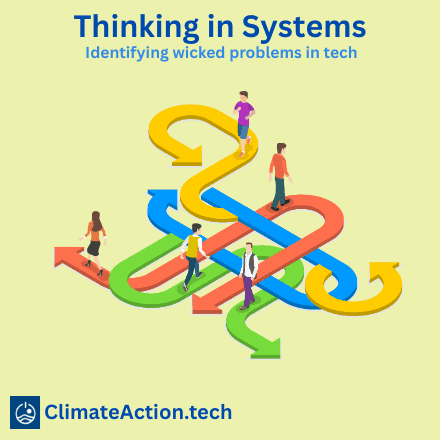The Systems Change for Sustainable Tech is an ongoing series that invites everyone who is interested to use systems thinking to build a sustainable tech future. This article recaps the “Identifying wicked problems in tech” workshop, held on September 11th. Systems changemakers from around the world gathered to list the wicked problems they feel make tech unethical and unsustainable.
On Thursday, September 11th, the CAT community gathered for the latest installment of the systems thinking workshop series, “Identifying Wicked Problems in Tech”. Together we understood what constitutes wicked problems in technology, how to define them, and methods for examining them from different perspectives. The purpose was to create a space where we could:
- Collaborate to identify and articulate specific wicked problems plaguing the tech landscape.
- Unravel the nature of wicked problems in tech.
This workshop set the stage for future events dedicated to individual wicked problems and exploring innovative, systemic solutions within our series on Systems Change for Sustainable Tech. The workshop also provided everyone the opportunity to:
- Engage in discussions, brainstorming, and collective problem-solving.
- Apply tools of systems thinking to real world problems.
- Connect with like-minded individuals invested in responsible tech development.
- Be part of an ongoing exploration towards sustainable solutions using systems thinking.
If you would like to be a part of the next co-creation systems series, join the #cat-systems-series channel on Slack.
Creating the Miro board
The Miro board was designed to maximize co-creation. It was segmented into the following sections:
- Our tech ecosystem (Where do we fit?): We positioned ourselves in a Venn diagram encompassing three circles – technology, process and people/society. It was interesting to observe that most of us situated ourselves in the intersections of technology and people/society.
- Defining wicked problems: This section explored various ways to define wicked, problems along with their inherent properties.
- Listing wicked problems: This space was utilized to list problems that we perceived as wicked, analyzing them through multiple lenses.

Defining wicked problems
We used the definition given in Wikipedia: “a wicked problem is a problem that is difficult or impossible to solve because of incomplete, contradictory, and changing requirements that are often difficult to recognize. It refers to an idea or problem that cannot be fixed, where there is no single solution to the problem; “wicked” does not indicate evil, but rather resistance to resolution.”
We emphasised the following aspects of wicked problems:
- “Wicked” does not indicate true nature.
- Wicked problems stem from numerous interconnected causes, making pinpointing root issues challenging.
- Addressing one aspect might inadvertently create new problems within the complex system.
- Understanding and managing wicked problems is more effective than seeking a singular “fix.”
We then looked at the properties of wicked problems which are given by design theorist Horst W. J. Rittel and city planning professor Melvin M. Webber:
- There is no definitive formulation of a wicked problem.
- Wicked problems are often ongoing.
- Solutions to wicked problems are not true or false, good or bad.
- There is no immediate and no ultimate test of a solution to a wicked problem.
- All attempts to find solutions have effects that may not be reversible.
- Wicked problems do not have a set of solutions.
- Every wicked problem is essentially unique.
- Every wicked problem can be considered to be a symptom of another problem.
- There are many explanations for wicked problems.
- There are no ‘right’ or ‘wrong’ answers.
Listing wicked problems
The workshop shifted to a brainstorming activity, focusing on identifying wicked problems through diverse lenses. We all listed not more than three problems we perceived as “wicked” and analyzed them using the following categories:
- Environmental
- Cultural
- Economic
- Social
- Ideological
- Psychological
- Geo-politics
- Ethical
- Gender
- Technological
- Legal
- Infrastructural
- Historical
- Human rights
- Health
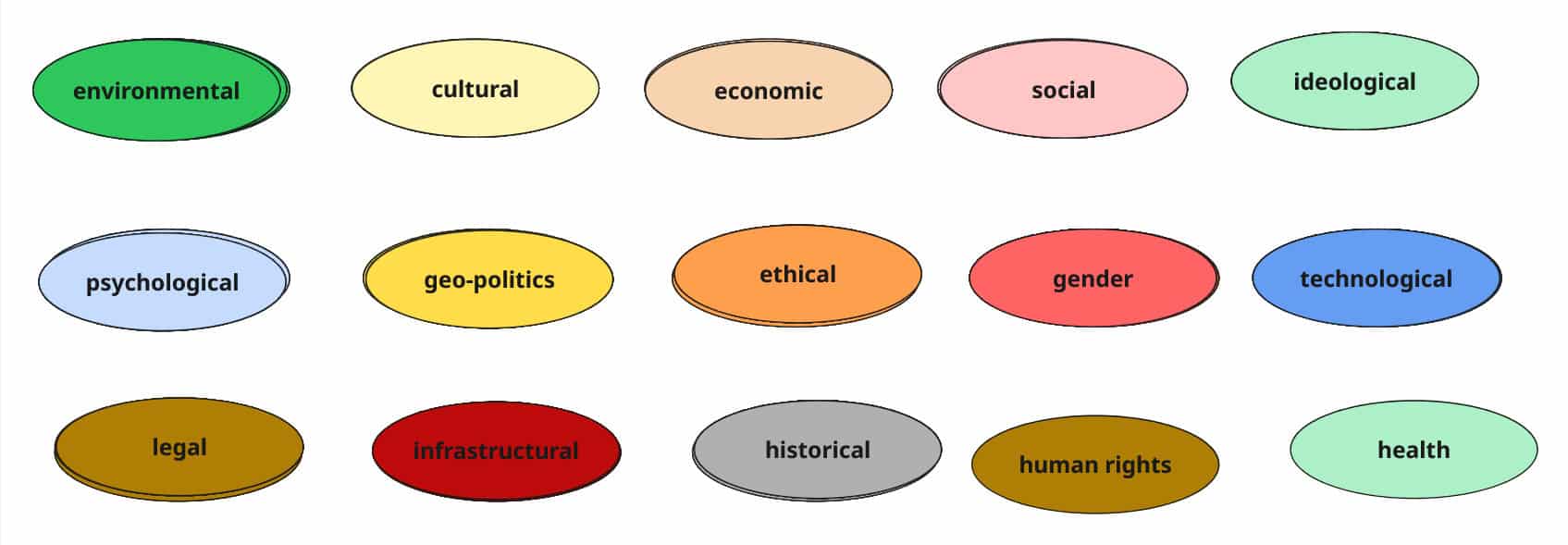
We placed sticky notes representing our chosen wicked problems on the board, strategically surrounding them with the relevant lenses we believed contributed to the problem’s complexity.
To illustrate this exercise, we dissected the example of AI crawlers through multiple perspectives:
- Environmental: The substantial carbon footprint generated by AI crawlers pulling information from the internet, contributing to the energy-intensive training of Large Language Models (LLMs) in data centers with high energy and water consumption.
- Economic: The strain on websites like Wikipedia due to bandwidth depletion caused by AI crawler activity, impacting their resources.
- Technological: The development and implementation of technologies aimed at optimizing and blocking AI crawlers to mitigate their impact.
- Legal: The lack of robust legal frameworks adequately addressing the ethical sourcing of information by AI crawlers.
- Infrastructural: The immense pressure placed on internet infrastructure to accommodate the growing volume of data processed by AI crawlers.
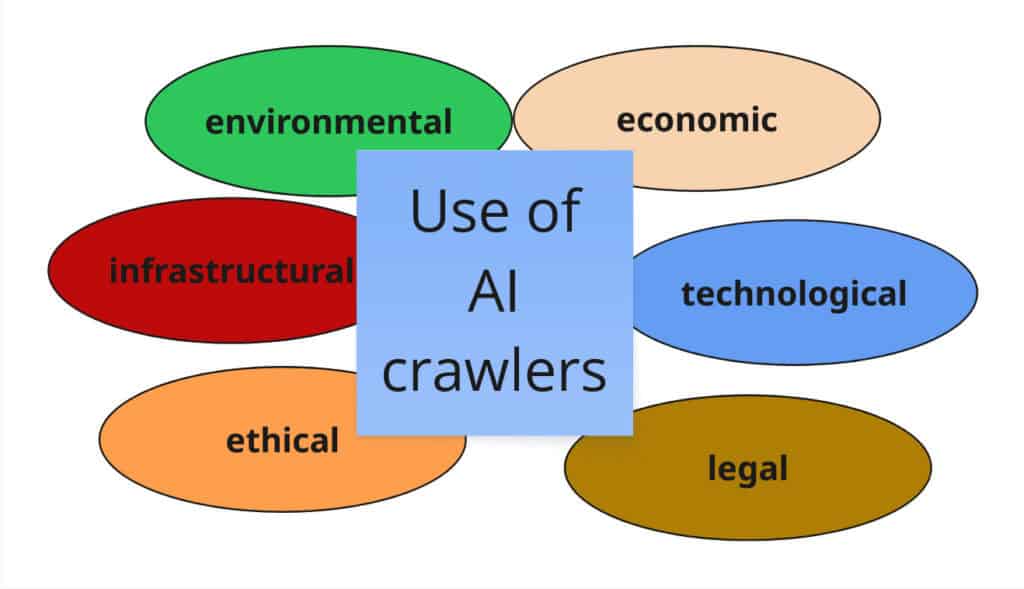
The workshop discussion uncovered a compelling list of wicked problems plaguing our tech ecosystem. We analyzed these challenges, assigning relevant lenses to understand their complexities and intersectionality:
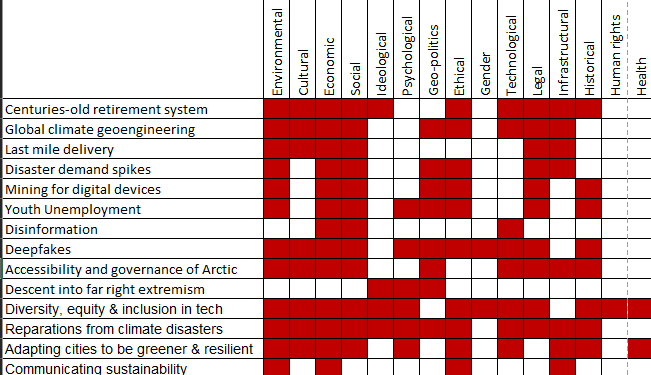
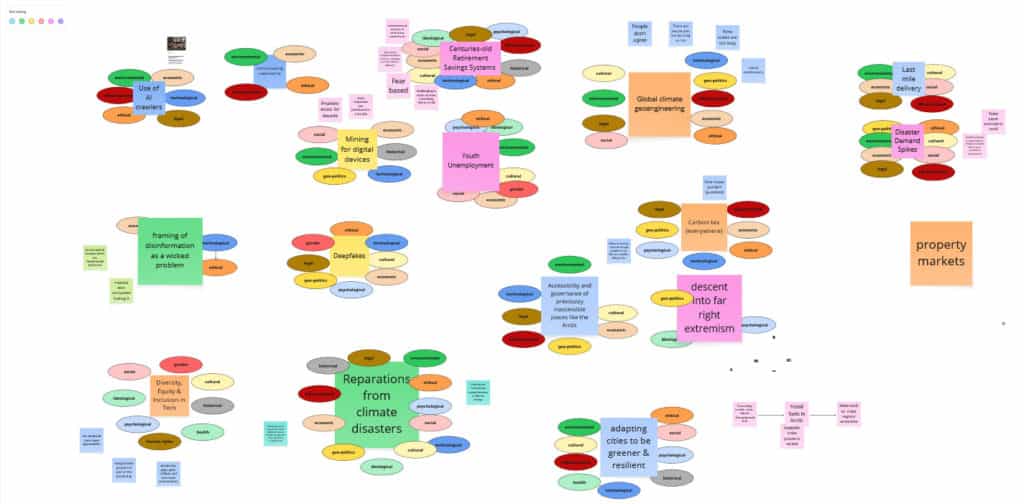
Thinking in systems continues
Collaborating on understanding wicked problems gives us hope that there is a community who cares enough to dare to start solving the wicked problems. We hope this workshop is just a start of bringing the ClimateAction.Tech community to come together to think about systemic problems and design fundamental solutions to make this world a better place. We’d love to continue this journey of co-creation in the CAT community.
Acknowledgements: A special thank you to Jon Sleeper for co-creating the workshop structure. Special appreciation also goes to Melissa Hsiung and Heather Baden for their dedication and support throughout the workshop planning. A huge thank you to all the CAT members whose insightful contributions made this event truly enriching. Finally, heartfelt gratitude to Elisa Escapa for her thoughtful editing, making the content more relatable and engaging for all.
References:
The content of the workshop was designed using the following resources:
- Wicked problem (wikipedia)
- What are wicked problems by Jane Johnson, Robyn Gulliver[
- Chapter 6, Wicked Problems
- Cynefin framework by Dave Snowden, released under CC-BY-SA-3.0
- Wicked problems: How to engineer a better world by Guru Madhavan
- How crawlers impact the operations of the Wikimedia projects
